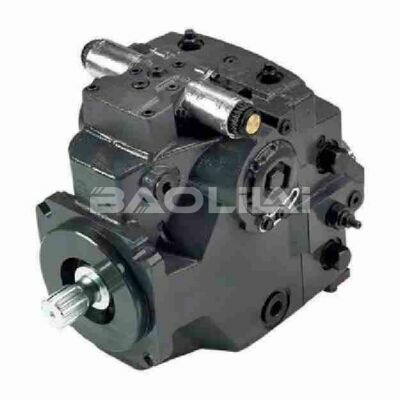Physical Properties Solutions to Optimize Piston Pump Performance
The physical properties of the fluid flowing in a plunger pump can significantly affect its performance. Unfavorable physical properties, such as high viscosity or the presence of particulate matter, can lead to problems such as reduced pump efficiency, increased wear, and potential damage to pump components. Here are some solutions to poor physical properties of the flowing medium in plunger pumps:
1. Filter:
Install a filtration system to remove particulate matter from the fluid before it enters the pump. This helps prevent damage to pump components and improves overall performance.
2.Temperature control:
Keep the fluid at an optimal temperature to ensure it remains within the pump's recommended viscosity range. High temperatures cause viscosity to decrease, while low temperatures increase viscosity, both of which can affect pump performance.
3. Viscosity adjustment:
If the fluid viscosity is too high, consider diluting it with an appropriate solvent or adjusting its composition to achieve the viscosity required for efficient pump operation.
4. Warm up:
Install a preheating system to increase fluid temperature before it enters the pump. This is especially useful if the fluid tends to thicken at lower temperatures.
H1-P-078-R-A-A-A2-C3-N-D8-H-G9-H5-L-38-L-38-C-P-20-PN-NNN-NNN H1P078RAAA2C3ND8HG9H5L38L38CP20PNNNNNNN
H1-P-078-R-A-A-A2-C3-N-D8-H-G1-NN-L-35-L-35-C-P-20-PN-NNN-NNN H1P078RAAA2C3ND8HG1NNL35L35CP20PNNNNNNN
H1-P-078-R-A-A-A2-C3-N-D6-H-G1-NN-L-28-L-28-F-L-24-PN-NNN-NNN H1P078RAAA2C3ND6HG1NNL28L28FL24PNNNNNNN
H1-P-078-R-A-A-A2-C3-N-D3-H-G1-NN-L-30-L-30-F-M-24-PN-NNN-NNN H1P078RAAA2C3ND3HG1NNL30L30FM24PNNNNNNN
H1-P-078-R-A-A-A2-C3-N-D3-H-G1-H3-L-35-L-35-F-M-24-PN-NNN-NNN H1P078RAAA2C3ND3HG1H3L35L35FM24PNNNNNNN
H1-P-078-R-A-A-A2-C3-B-F5-H-G1-H6-L-35-L-35-F-P-24-PN-NNN-NNN H1P078RAAA2C3BF5HG1H6L35L35FP24PNNNNNNN
H1-P-078-R-A-A-A2-C3-B-D8-H-G1-NN-L-35-L-35-F-P-24-PN-NNN-NNN H1P078RAAA2C3BD8HG1NNL35L35FP24PNNNNNNN
H1-P-078-R-A-A-A2-C3-B-D8-H-G1-H3-L-35-L-35-F-P-24-PN-NNN-NNN H1P078RAAA2C3BD8HG1H3L35L35FP24PNNNNNNN
H1-P-078-R-A-A-A2-C2-N-F6-H-G9-H6-L-43-L-43-C-L-20-PN-NNN-NNN H1P078RAAA2C2NF6HG9H6L43L43CL20PNNNNNNN
H1-P-078-R-A-A-A2-C2-N-F6-H-G9-H6-L-35-L-35-C-L-24-PN-NNN-NNN H1P078RAAA2C2NF6HG9H6L35L35CL24PNNNNNNN
H1-P-078-R-A-A-A2-C2-N-F6-H-G1-H6-L-40-L-40-C-L-32-PN-NNN-NNN H1P078RAAA2C2NF6HG1H6L40L40CL32PNNNNNNN
H1-P-078-R-A-A-A2-C2-N-F6-H-G1-H6-L-40-L-40-C-L-24-PN-NNN-NNN H1P078RAAA2C2NF6HG1H6L40L40CL24PNNNNNNN
H1-P-078-R-A-A-A2-C2-N-F6-H-G1-H6-L-30-L-40-C-L-24-PN-NNN-NNN H1P078RAAA2C2NF6HG1H6L30L40CL24PNNNNNNN
H1-P-078-R-A-A-A2-C2-N-F5-H-G9-H6-L-45-L-45-N-E-26-PN-NNN-NNN H1P078RAAA2C2NF5HG9H6L45L45NE26PNNNNNNN
H1-P-078-R-A-A-A2-C2-N-F5-H-G9-H6-L-42-L-42-C-P-28-PN-NNN-NNN H1P078RAAA2C2NF5HG9H6L42L42CP28PNNNNNNN
H1-P-078-R-A-A-A2-C2-N-F5-H-G9-H6-L-42-L-42-C-P-24-PN-NNN-NNN H1P078RAAA2C2NF5HG9H6L42L42CP24PNNNNNNN
H1-P-078-R-A-A-A2-C2-N-F5-H-G1-H6-K-45-K-45-C-P-24-PN-NNN-NNN H1P078RAAA2C2NF5HG1H6K45K45CP24PNNNNNNN
H1-P-078-R-A-A-A2-C2-N-F5-H-F1-H6-K-45-K-45-C-P-24-PN-NNN-NNN H1P078RAAA2C2NF5HF1H6K45K45CP24PNNNNNNN
H1-P-078-R-A-A-A2-C2-N-F4-H-G9-H6-K-35-K-35-C-M-24-PN-NNN-NNN H1P078RAAA2C2NF4HG9H6K35K35CM24PNNNNNNN
H1-P-078-R-A-A-A2-C2-N-F4-H-G1-H6-L-23-L-23-C-M-24-PN-NNN-NNN H1P078RAAA2C2NF4HG1H6L23L23CM24PNNNNNNN
5. Use of additives:
Additives can be used to improve lubricity, reduce friction, or change the rheological properties of a fluid. Consult an expert or pump manufacturer to determine the appropriate additives for the specific fluid being used.
6. Regular maintenance:
Implement a routine maintenance schedule to clean and inspect pump components. Regular maintenance helps prevent sediment buildup and ensures the pump is operating at optimal efficiency.
7. Material selection:
Make sure the materials used in the construction of the pump are compatible with the characteristics of the fluid. Some fluids can be corrosive or abrasive, requiring specific materials for pump components to withstand these conditions.
8.Pump design modification:
Consult the pump manufacturer to discuss design modifications to improve pump performance while taking into account the specific characteristics of the flowing medium.
9. Pressure adjustment:
Monitor and regulate pressure within pump systems. Excessive pressure can cause problems such as cavitation, which can negatively impact pump performance.
10. Consult the experts:
Seek advice from a pump expert, fluid dynamics expert, or engineer with experience in similar applications. They can provide insights and advice tailored to the specific challenges posed by flowing media.

11. Pump size:
Make sure the pump is sized for the specific flow and pressure requirements of the application. An oversized or undersized pump may not operate efficiently and may cause problems with the flowing media.
12. Variable speed drive:
Consider using a variable speed drive (VSD) to control pump speed. This allows adjustments to actual needs, optimizing pump performance and reducing the impact of undesirable flow medium characteristics.
13. Fluid analysis:
Fluid analysis is performed regularly to monitor the condition of the flowing media. This can help identify any changes to the property and allow for proactive adjustments or maintenance to prevent problems from escalating.
14. Education and training:
Ensure operators and maintenance personnel are well trained and educated on the specific requirements and challenges associated with flowing media. Knowledgeable personnel can take preventive measures and effectively respond to any issues that arise.
15. Seals and gasket selection:
Pay attention to the selection of seals and gaskets used in the pump. Make sure they are compatible with the characteristics of the flowing medium to prevent leakage and contamination.
16. System redundancy:
Consider building redundancy into critical pump systems. When unexpected conditions occur with the flowing media, having a backup pump or system provides failure protection, minimizing downtime.
H1-P-078-R-A-A-A2-C2-N-F4-H-G1-H6-K-35-K-35-F-M-24-PN-NNN-NNN H1P078RAAA2C2NF4HG1H6K35K35FM24PNNNNNNN
H1-P-078-R-A-A-A2-C2-N-F4-H-F1-H6-L-35-L-35-C-M-24-PN-NNN-NNN H1P078RAAA2C2NF4HF1H6L35L35CM24PNNNNNNN
H1-P-078-R-A-A-A2-C2-N-D8-K-G9-H5-L-45-L-45-N-E-34-P4-NNN-NNN H1P078RAAA2C2ND8KG9H5L45L45NE34P4NNNNNN
H1-P-078-R-A-A-A2-C2-N-D8-H-G9-H5-L-42-L-42-N-E-24-PN-NNN-NNN H1P078RAAA2C2ND8HG9H5L42L42NE24PNNNNNNN
H1-P-078-R-A-A-A2-C2-N-D8-H-G1-H5-L-40-L-40-N-E-28-PN-NNN-NNN H1P078RAAA2C2ND8HG1H5L40L40NE28PNNNNNNN
H1-P-078-R-A-A-A2-C2-N-D8-H-G1-H3-L-42-L-42-C-P-28-PN-NNN-NNN H1P078RAAA2C2ND8HG1H3L42L42CP28PNNNNNNN
H1-P-078-R-A-A-A2-C2-N-D8-H-G1-H3-L-42-L-42-C-P-24-PN-NNN-NNN H1P078RAAA2C2ND8HG1H3L42L42CP24PNNNNNNN
H1-P-078-R-A-A-A2-C2-N-D8-H-G1-H3-L-38-L-20-N-E-26-PN-NNN-NNN H1P078RAAA2C2ND8HG1H3L38L20NE26PNNNNNNN
H1-P-078-R-A-A-A2-C2-N-D8-H-G1-H3-L-30-L-25-C-P-24-PN-NNN-NNN H1P078RAAA2C2ND8HG1H3L30L25CP24PNNNNNNN
H1-P-078-R-A-A-A2-C2-N-D8-H-G1-H3-L-15-L-35-N-E-26-PN-NNN-NNN H1P078RAAA2C2ND8HG1H3L15L35NE26PNNNNNNN
H1-P-078-R-A-A-A2-C2-N-D8-H-G1-H3-K-38-K-38-N-E-24-PN-NNN-NNN H1P078RAAA2C2ND8HG1H3K38K38NE24PNNNNNNN
H1-P-078-R-A-A-A2-C2-N-D8-H-G1-H2-L-42-L-42-C-P-24-PN-NNN-NNN H1P078RAAA2C2ND8HG1H2L42L42CP24PNNNNNNN
H1-P-078-R-A-A-A2-C2-N-D8-H-G1-H1-L-35-L-35-F-P-20-PN-NNN-NNN H1P078RAAA2C2ND8HG1H1L35L35FP20PNNNNNNN
H1-P-078-R-A-A-A2-C2-N-D6-H-G9-H3-L-45-L-45-C-L-20-PN-NNN-NNN H1P078RAAA2C2ND6HG9H3L45L45CL20PNNNNNNN
H1-P-078-R-A-A-A2-C2-N-D6-H-G1-NN-L-40-L-40-C-L-24-PN-NNN-NNN H1P078RAAA2C2ND6HG1NNL40L40CL24PNNNNNNN
H1-P-078-R-A-A-A2-C2-N-D6-H-G1-H3-L-35-L-35-C-L-24-PN-NNN-NNN H1P078RAAA2C2ND6HG1H3L35L35CL24PNNNNNNN
H1-P-078-R-A-A-A2-C2-N-D3-H-G9-H5-L-40-L-40-C-M-24-PN-NNN-NNN H1P078RAAA2C2ND3HG9H5L40L40CM24PNNNNNNN
H1-P-078-R-A-A-A2-C2-N-D3-H-G1-NN-L-40-L-40-C-M-26-PN-NNN-NNN H1P078RAAA2C2ND3HG1NNL40L40CM26PNNNNNNN
H1-P-078-R-A-A-A2-C2-N-D3-H-G1-NN-L-30-L-40-F-M-28-PN-NNN-NNN H1P078RAAA2C2ND3HG1NNL30L40FM28PNNNNNNN
H1-P-078-R-A-A-A2-C2-N-D3-H-G1-NN-L-20-L-20-F-M-20-PN-NNN-NNN H1P078RAAA2C2ND3HG1NNL20L20FM20PNNNNNNN
17. Upgrade pump technology:
Explore newer pump technologies or models that may be better suited to handling challenging flow media. Advances in pump design and materials can improve performance and reliability.
18. Entrance and exit conditions:
Optimize the inlet and outlet conditions of the pump system. Properly designed pipes, valves and fittings facilitate the efficient flow of media and reduce the likelihood of problems.
19. Operation monitoring:
Implement real-time monitoring systems to track key parameters such as pressure, temperature and flow. This allows early detection of any deviations from normal operating conditions.
20. Cooperation with suppliers:
Work closely with fluid suppliers and pump manufacturers to resolve specific challenges related to flowing media. They can provide valuable insights and customized solutions based on their expertise.
This problem must be addressed systematically, involving experts in fluid dynamics, pump engineering and system design if necessary, to find the most effective solution to the specific challenges posed by the unfavorable physical properties of the flowing medium in piston pumps .
This article is published by the official website of Baolilai Hydraulics, please contact the author and indicate the source for reprinting:https://www.baolilai-pump.cn/news/1162.html






